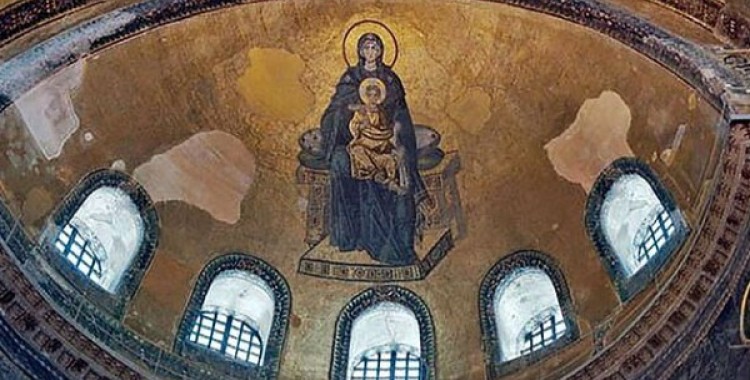Hagia Sophia Istanbul

Hagia Sophia Istanbul
The construction of Hagia Sophia started on 23 December 532 and was completed on 27 December 537. Hagia Sophia is of great importance for its own period and for later periods. Hagia Sophia, one of the 8 wonders of the world, was used as a church for 916 years and as a mosque for 481 years. Hagia Sophia was built by combining the traditional basilical plan and the central domed plan. The building has three naves, an apse, and two narthexes, inner and outer. The length from the apse to the outer narthex is 100 m. width is 69.50 m. The height of the dome from the ground is 55.60 m, and its diameter is 31.87 m in the north-south direction and 30.86 m in the east-west direction.
There are a total of 104 columns in the building, 40 of which are in the lower gallery and 64 of which are in the upper gallery. All surfaces except the marble-covered walls of Hagia Sophia are decorated with beautiful mosaics. Materials consisting of gold, silver, glass, terracotta and colored stones were used in the making of mosaics. The floral and geometric mosaics in the building date to the 6th century, and the depicted mosaics date to after the iconoclasm (Depiction Breaking Period 730-842). Hagia Sophia was converted into a mosque after Fatih Sultan Mehmed (1451-1481) conquered Istanbul in 1453. Immediately after the conquest, the building was strengthened and preserved in the best possible way and continued its existence as a mosque with additions from the Ottoman Period. Buttresses were built to support the structure, which has been damaged by various earthquakes since the date it was built, during both the Eastern Roman and Ottoman periods. The minarets built by Mimar Sinan also serve as supporting buttresses in the building.
During the Ottoman Period, in the 16th and 17th centuries, mihrabs, pulpit, muezzin's gatherings, sermon pulpits and maksures were added to Hagia Sophia.
7.5 m. Written by Calligrapher Kadıasker Mustafa İzzet Efendi during the reign of Sultan Abdulmecid. 8 calligraphy signs in diameter are placed on the walls of the main space. “Allah, Hz. Muhammad, Hz. Abu Bakr, Hz. Omar, Hz. Osman, Hz. Ali, Hz. Hasan and Hz. These plates with the words "Hussein" written on them are known as the largest calligraphy plates in the Islamic world. The same calligrapher wrote the 35th verse of Surah An-Nur in the middle of the dome.
Hagia Sophia was converted into a museum by the order of Mustafa Kemal Atatürk and the decision of the Council of Ministers, and was opened to local and foreign visitors as a museum on February 1, 1935.
You can see Hagia Sophia on our daily tours.
Reservations: info@istanbulshuttle.com
WhatsApp: +90 530 580 2807